CCR
CCR2 (C-C chemokine receptor type 2), the receptor for monocyte chemoattractant protein-1 (CCL2), mediate agonist-dependent calcium mobilization and inhibition of adenylyl cyclase.
Products for CCR
- Cat.No. Product Name Information
-
GC35185
7,4'-Dihydroxyflavone
7,4'-Dihydroxyflavone (7,4'-DHF) is a flavonoid isolated from Glycyrrhiza uralensis, the eotaxin/CCL11 inhibitor, has the ability to consistently suppress eotaxin production and prevent dexamethasone (Dex)‐paradoxical adverse effects on eotaxin production.
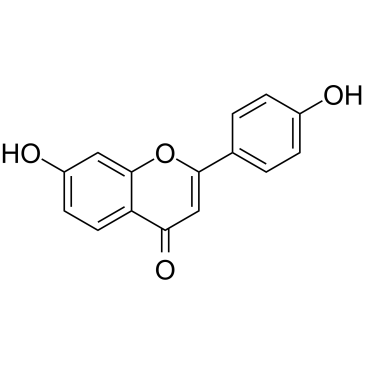
-
GC62833
ALK4290
ALK4290 (AKST4290) is a potent and orally actively CCR3 inhibitor extracted from patent US20130261153A1, compound Example 2, with a Ki of 3.2 nM for hCCR3.
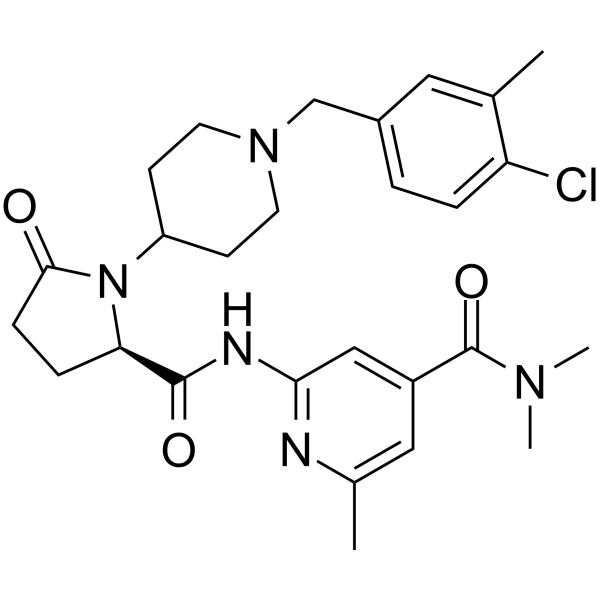
-
GC32336
Aplaviroc (AK 602)
Aplaviroc (AK 602) (AK 602), a SDP derivative, is a CCR5 antagonist, with IC50s of 0.1-0.4 nM for HIV-1Ba-L, HIV-1JRFL and HIV-1MOKW.
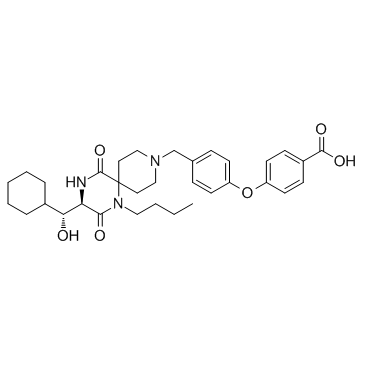
-
GC62610
Aplaviroc hydrochloride
Aplaviroc (AK 602) hydrochloride, a SDP derivative, is a CCR5 antagonist, with IC50s of 0.1-0.4 nM for HIV-1Ba-L, HIV-1JRFL and HIV-1MOKW.
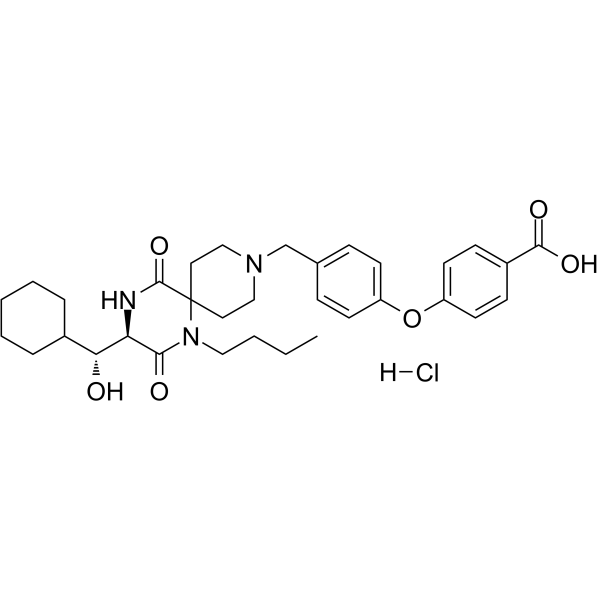
-
GC65213
AZ084
AZ084 is a potent, selective, allosteric and oral active CCR8 allosteric antagonist, with a Ki of 0.9 nM.
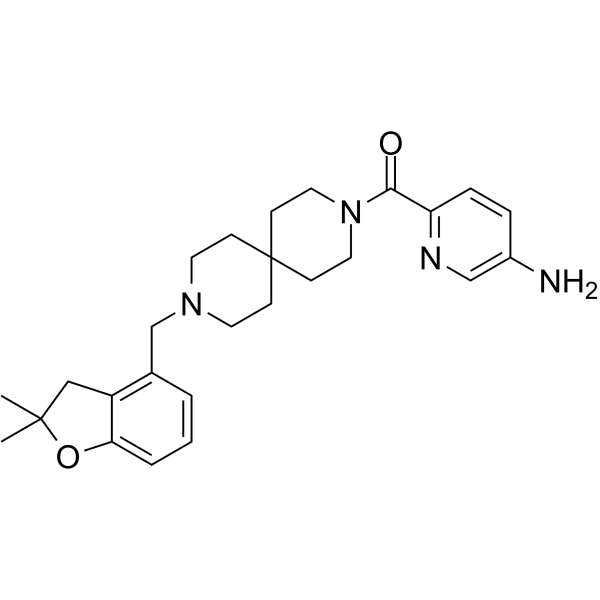
-
GC63284
AZD-4818
AZD-4818 is a potent antagonist of chemokine CCR1.
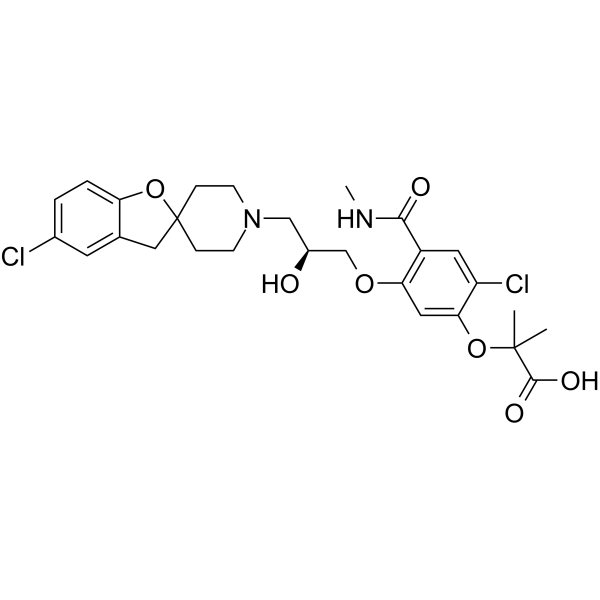
-
GC64274
AZD-5672
AZD-5672 is an orally active, potent, and selective CCR5 antagonist (IC50=0.32 nM).
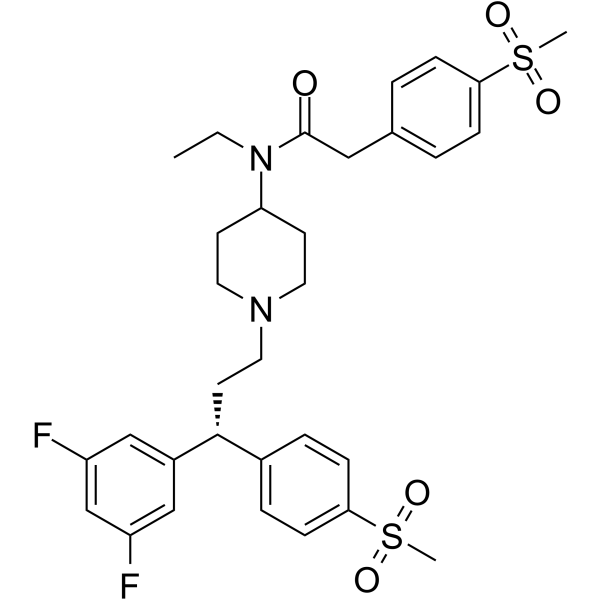
-
GC31662
AZD2098
A CCR4 receptor antagonist
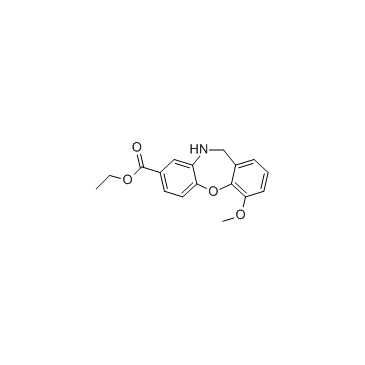
-
GC60615
AZD2423
AZD2423 is a potent, selective, orally bioavailable, and non-competitive CCR2 chemokine receptor negative allosteric modulator.
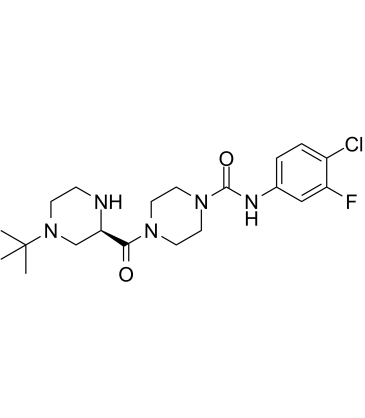
-
GC62412
BI-6901
BI 6901 is a potent, selective CCR10 antagonist (pIC50=9.0).
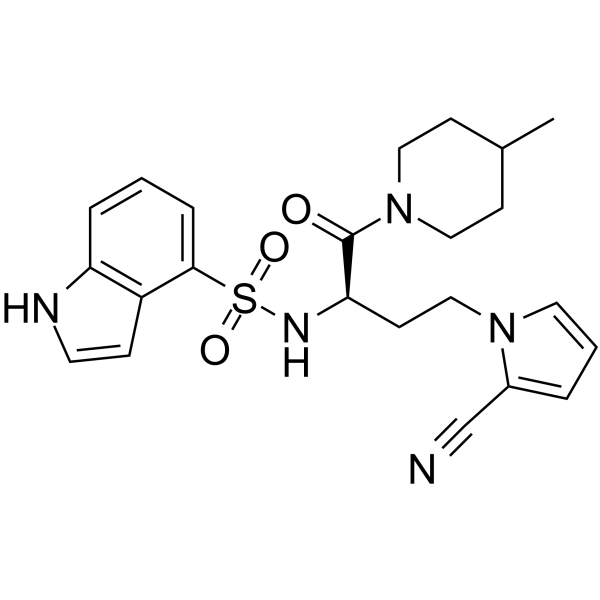
-
GC13335
Bindarit
Bindarit is a small molecule that is able to prevent the chronicity of inflammation
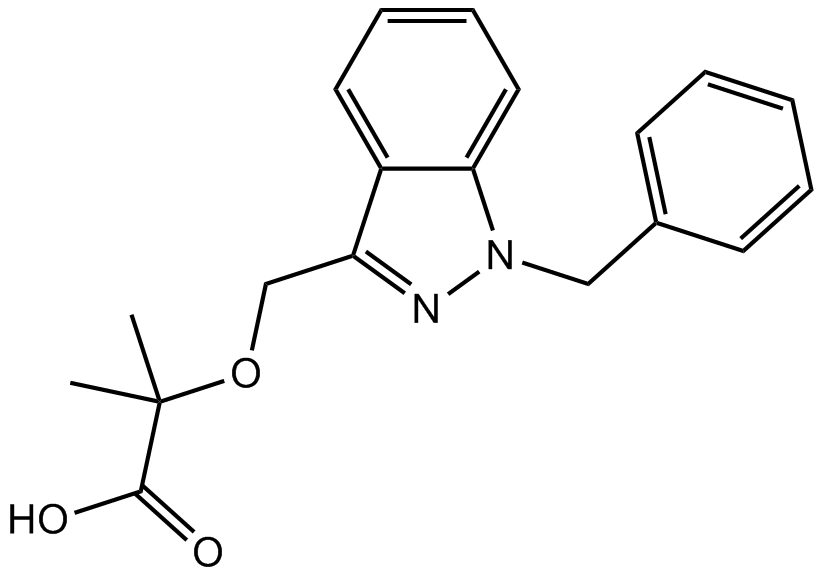
-
GC38496
BMS CCR2 22
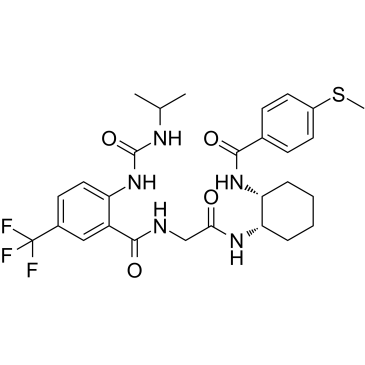
-
GC19077
BMS-813160
BMS-813160 is the first dual CCR2/CCR5 antagonist to enter clinical development for cardiovascular.
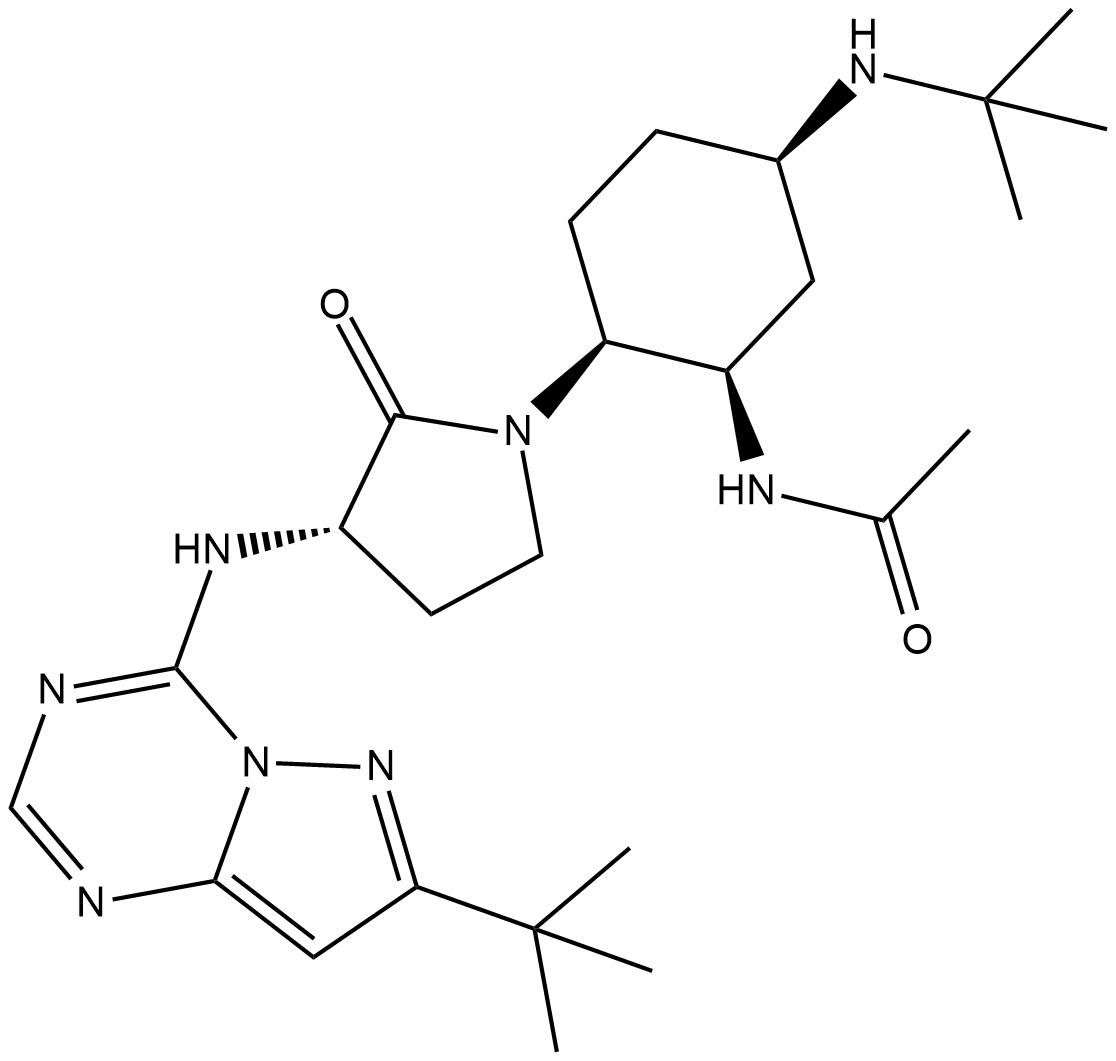
-
GC14519
BX 471
CCR1 antagonist,potent and selective
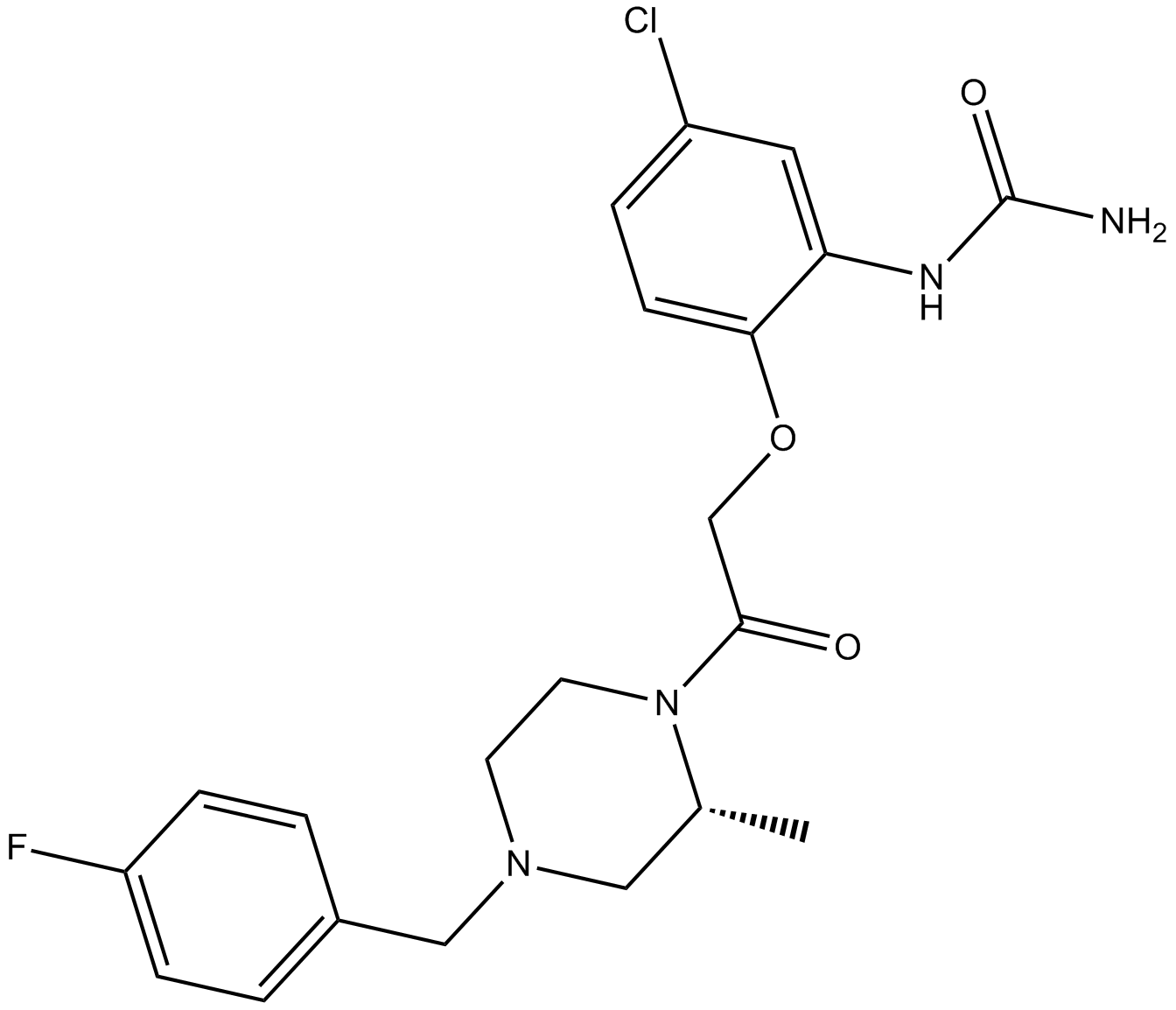
-
GC35570
BX471 hydrochloride
BX471 hydrochloride (ZK-811752 hydrochloride) is a potent, selective non-peptide CCR1 antagonist with Ki of 1 nM for human CCR1, and exhibits 250-fold selectivity for CCR1 over CCR2, CCR5 and CXCR4.
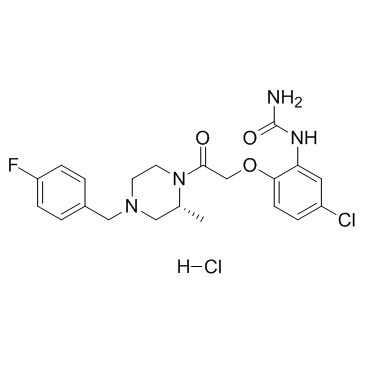
-
GC11161
C 021 dihydrochloride
C 021 dihydrochloride is a potent CC chemokine receptor-4 (CCR4) antagonist.
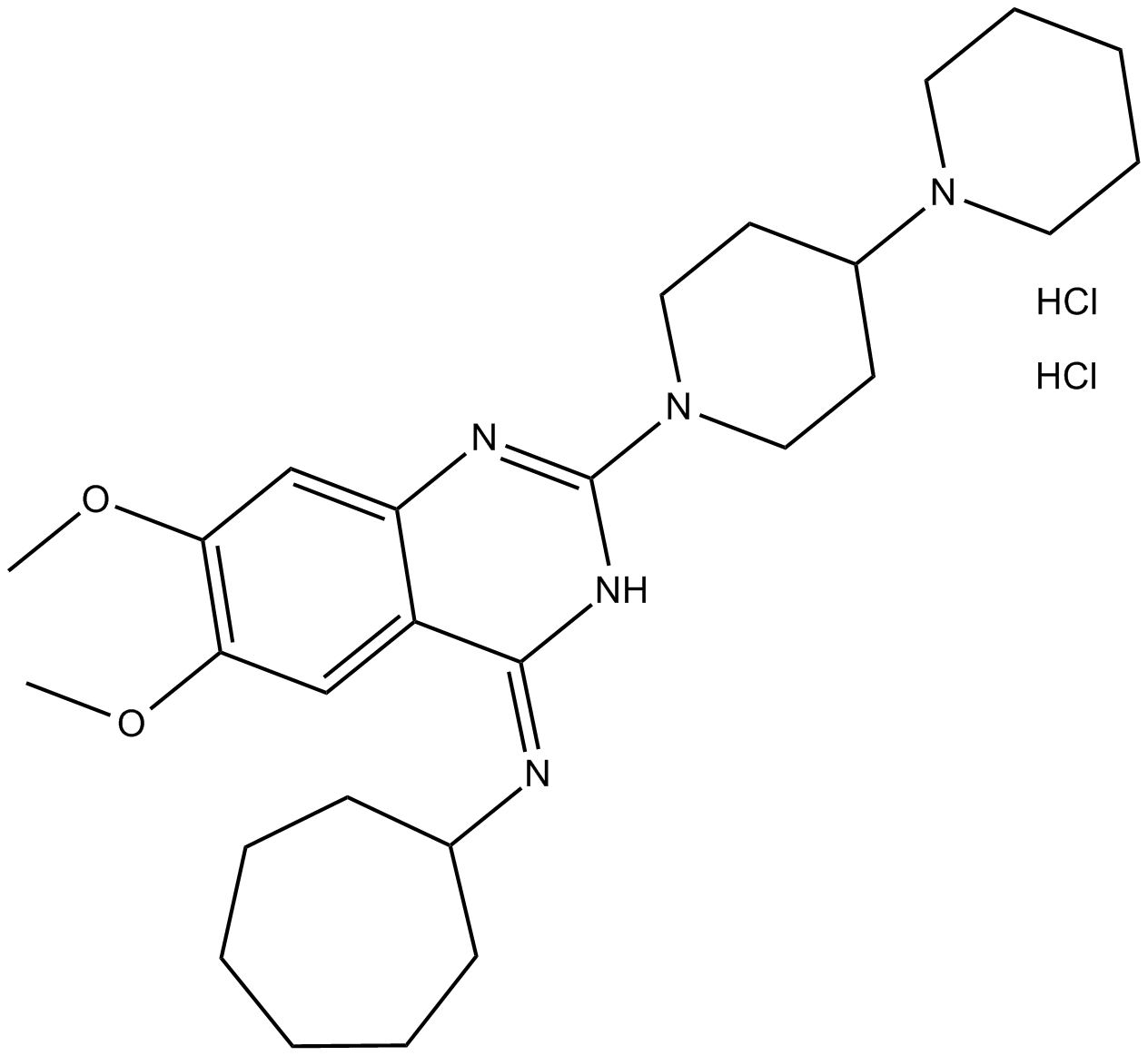
-
GC68832
Carlumab
Carlumab (CNTO 888) is a highly-affinity humanized antibody against CCL2 (chemokine ligand 2). Carlumab can be used for cancer research, especially in prostate cancer.
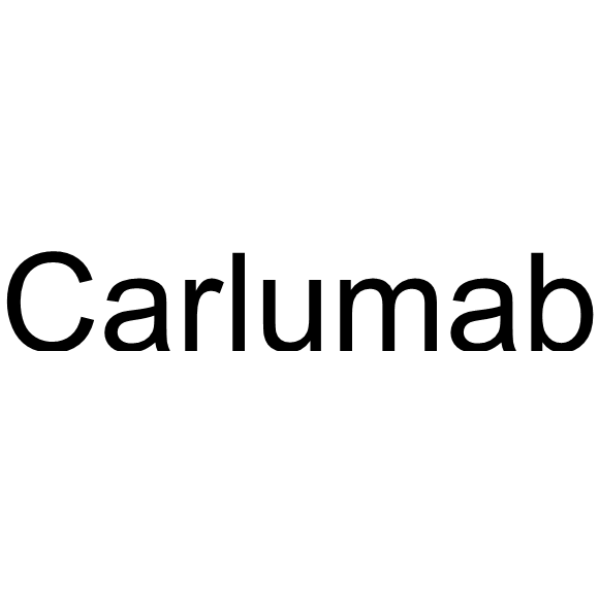
-
GC31996
CCR1 antagonist 1
CCR1 antagonist 1 is an antagonist of CCR1, with anti-inflammatory activity.
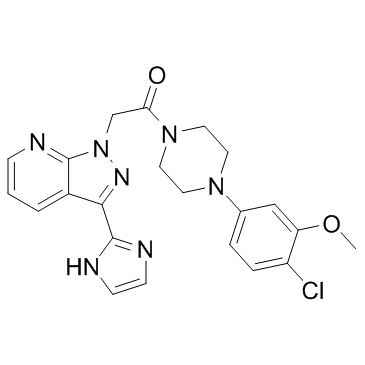
-
GC31893
CCR1 antagonist 8
CCR1 antagonist 8 (compound 19n), a third azaindazole series compound, is a CCR1 antagonist, with an IC50 of 1.8 nM in Ca2+ flux assay.
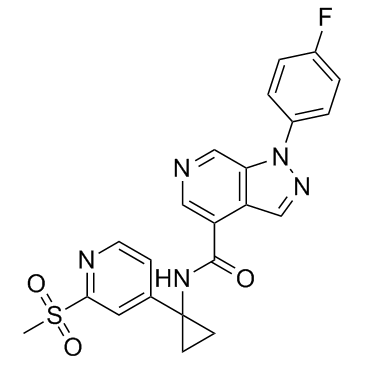
-
GC30560
CCR2 antagonist 1
CCR2 antagonist 1 is a high-affinity and long-residence-time CCR2 antagonist, with a Ki of 2.4 nM.
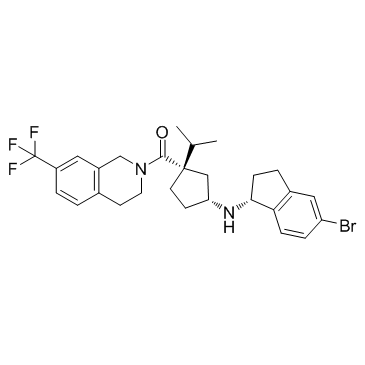
-
GC31911
CCR2 antagonist 3
CCR2 antagonist 3 is a chemokine receptor 2 (CCR2) antagonist.
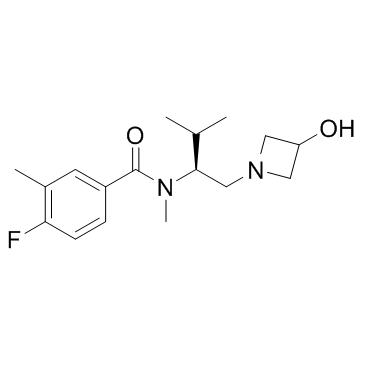
-
GC60679
CCR2 antagonist 4
CCR2 antagonist 4 (Teijin compound 1) is a potent and specific CCR2 antagonist, with IC50s of 180 nM for CCR2b.
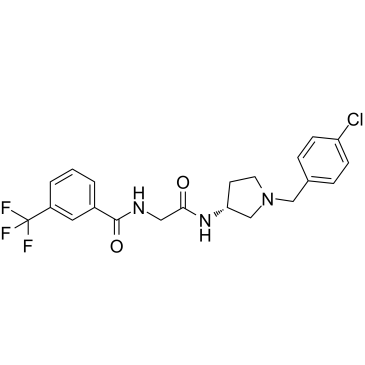
-
GC31714
CCR2-RA-[R]
CCR2-RA -[R] can inhibit CCR2 in a non-competitive binding manner, mainly by blocking activation-related conformational changes and the formation of G-protein binding interfaces.
![CCR2-RA-[R] Chemical Structure CCR2-RA-[R] Chemical Structure](/media/struct/GC3/GC31714.png)
-
GC32017
CCR3 antagonist 1
CCR3 antagonist 1 is a potent antagonist of CCR3, used for the research of immunologic and inflammatory diseases.
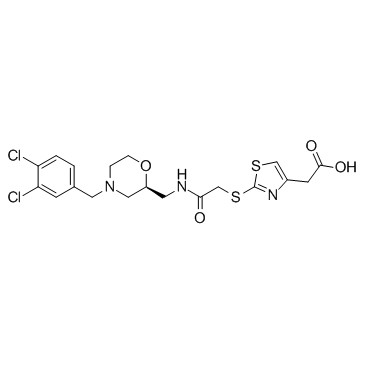
-
GC35626
CCR4 antagonist 2
CCR4 antagonist 2 (Compound 31) is a novel potent, orally bioavailable small molecule antagonists of CC chemokine receptor 4 (CCR4) that inhibits Treg trafficking into the Tumor Microenvironment without suppressing the number of Treg in healthy tissues.
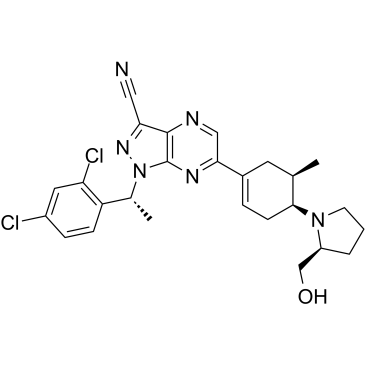
-
GC64441
CCR4 antagonist 3
CCR4 antagonist 3 is an orally active, potent and selective CCR4 antagonist. CCR4 antagonist 3, featuring a novel piperidinyl-azetidine motif, has IC50s of 22 nM and 50 nM in the calcium flux and CTX assay. CCR4 antagonist 3 has antitumor activity.
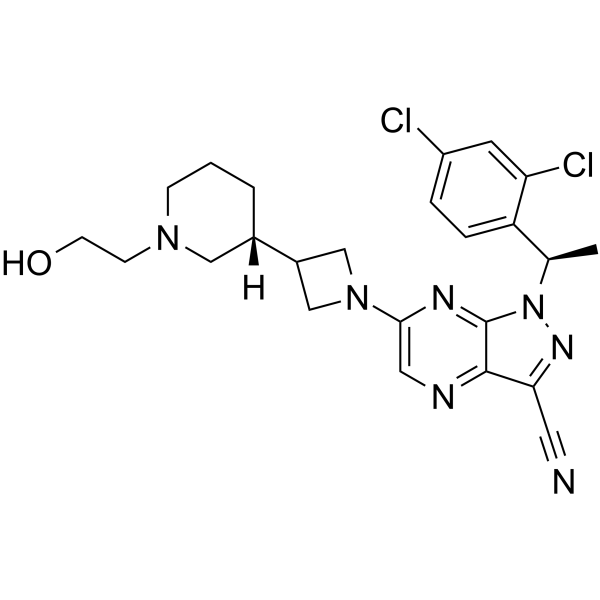
-
GC63857
CCR4 antagonist 3 hydrochloride
CCR4 antagonist 3 hydrochloride is an orally active, potent and selective CCR4 antagonist.
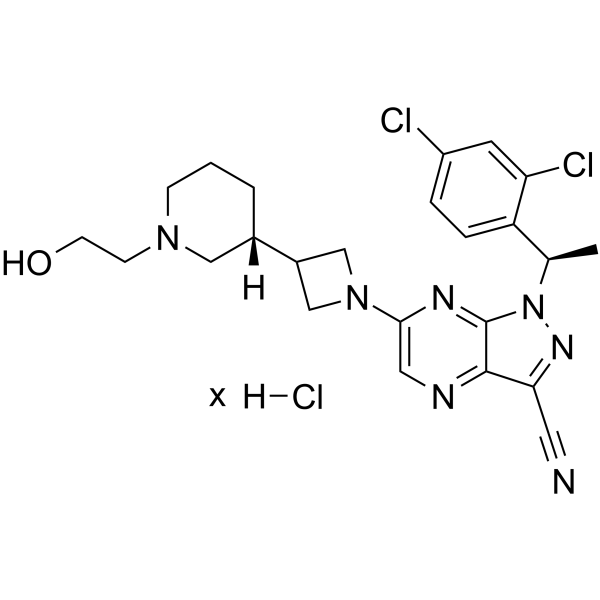
-
GC32367
CCR5 antagonist 1
CCR5 antagonist 1 is a CCR5 antagonist which can inhibit HIV replication extracted from WO 2004054974 A2.
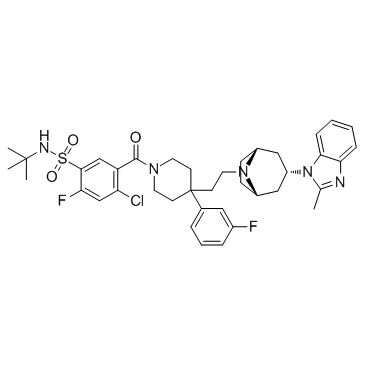
-
GC67788
CCR6 antagonist 1
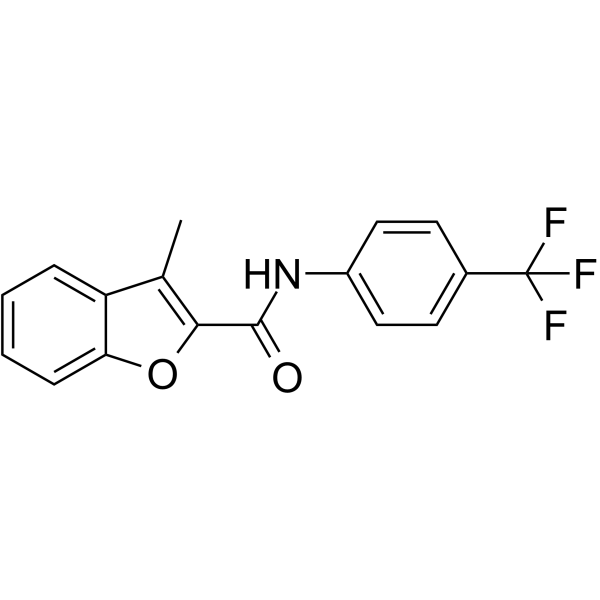
-
GC34521
CCR6 inhibitor 1
CCR6 inhibitor 1 is a potent and selective CCR6 inhibitor, with IC50s of 0.45 and 6 nM for monkey and human CCR6, much more selective at CCR6 over human CCR1 (IC50, > 30000 nM), and CCR7 (IC50, 9400 nM).
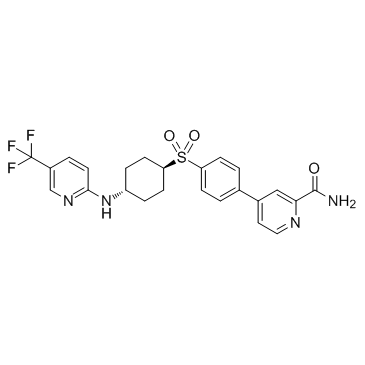
-
GC65141
CCR8 antagonist 1
CCR8 antagonist 1 (compound 15) is a potente human CCR8 antagonist with a Ki of 1.6 nM.
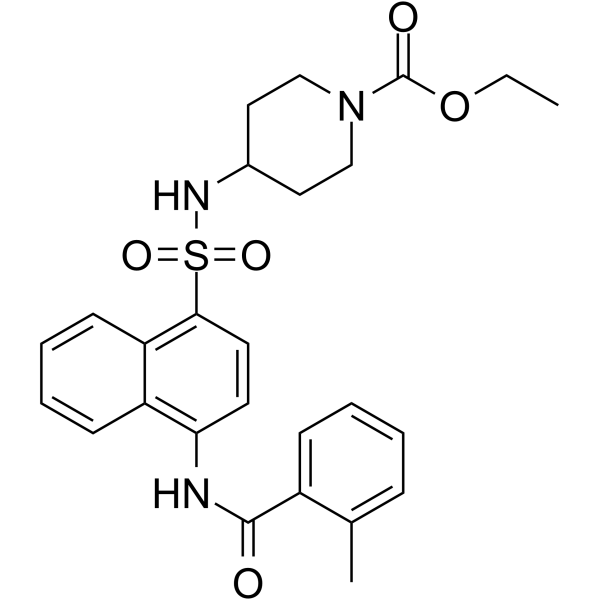
-
GC67897
CCR8 antagonist 2
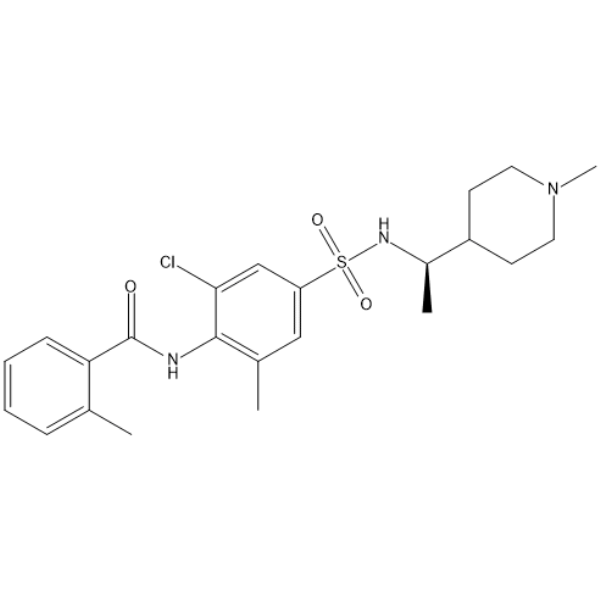
-
GC31330
CCX140
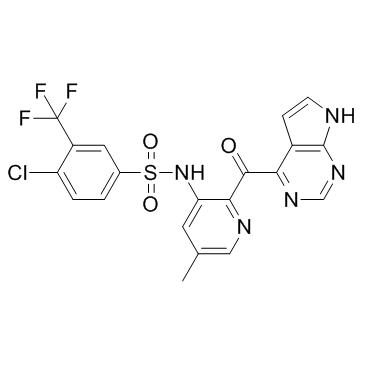
-
GC19101
Cenicriviroc
Cenicriviroc (CVC) is an oral, dual CCR2/CCR5 antagonist with nanomolar potency against both receptors.
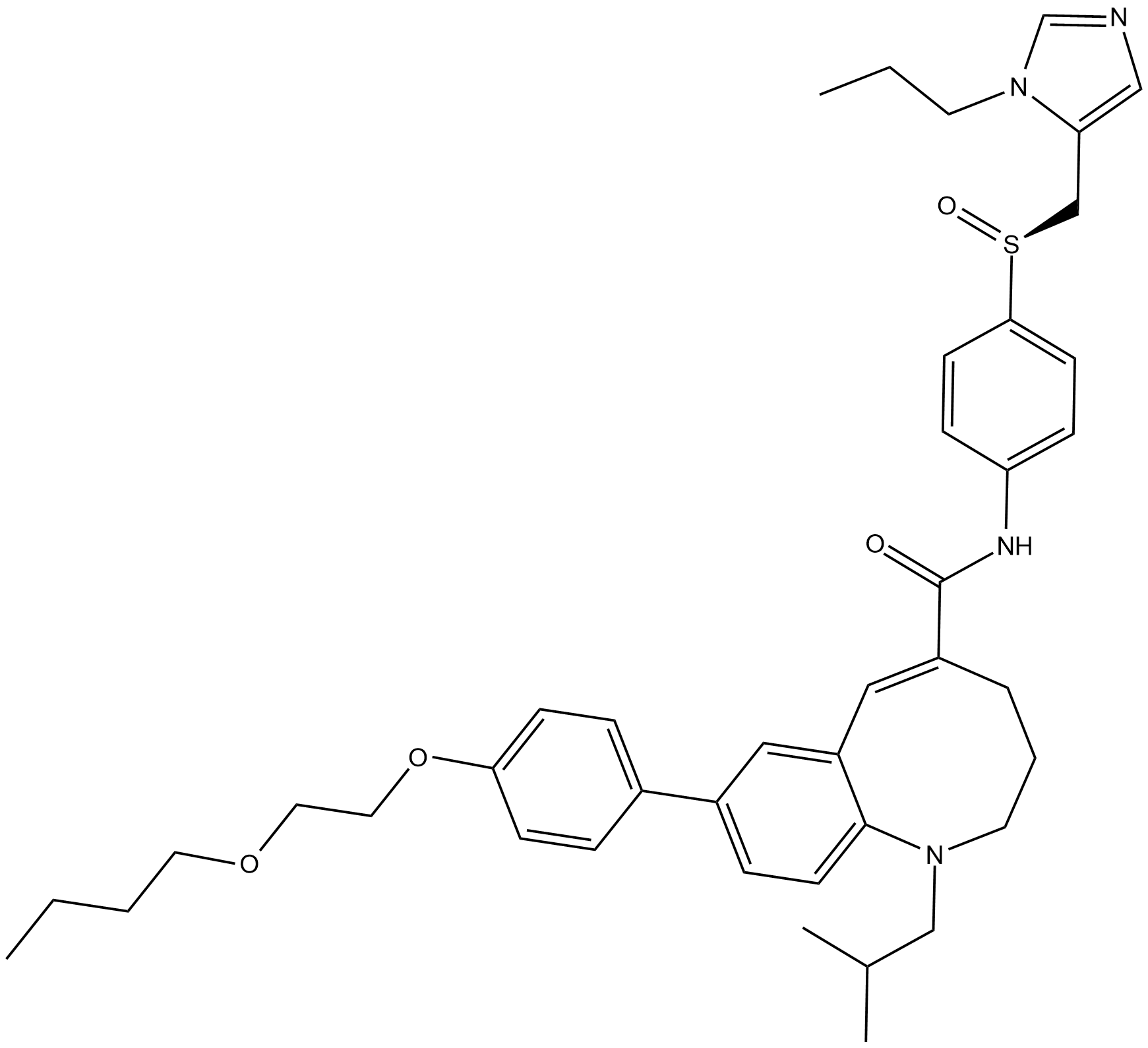
-
GC35650
Cenicriviroc Mesylate
Cenicriviroc Mesylate (TAK-652 Mesylate) is a dual CCR2/CCR5 antagonist, also inhibits both HIV-1 and HIV-2, and displays potent anti-inflammatory and antiinfective activity.
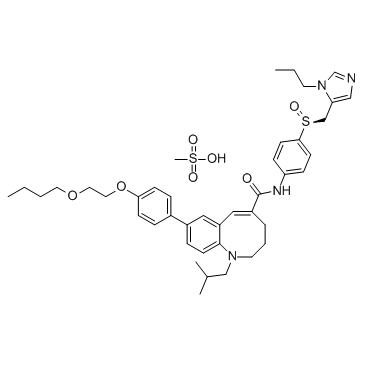
-
GC17040
DAPTA
Chemokine receptor 5 (CCR5) antagonist
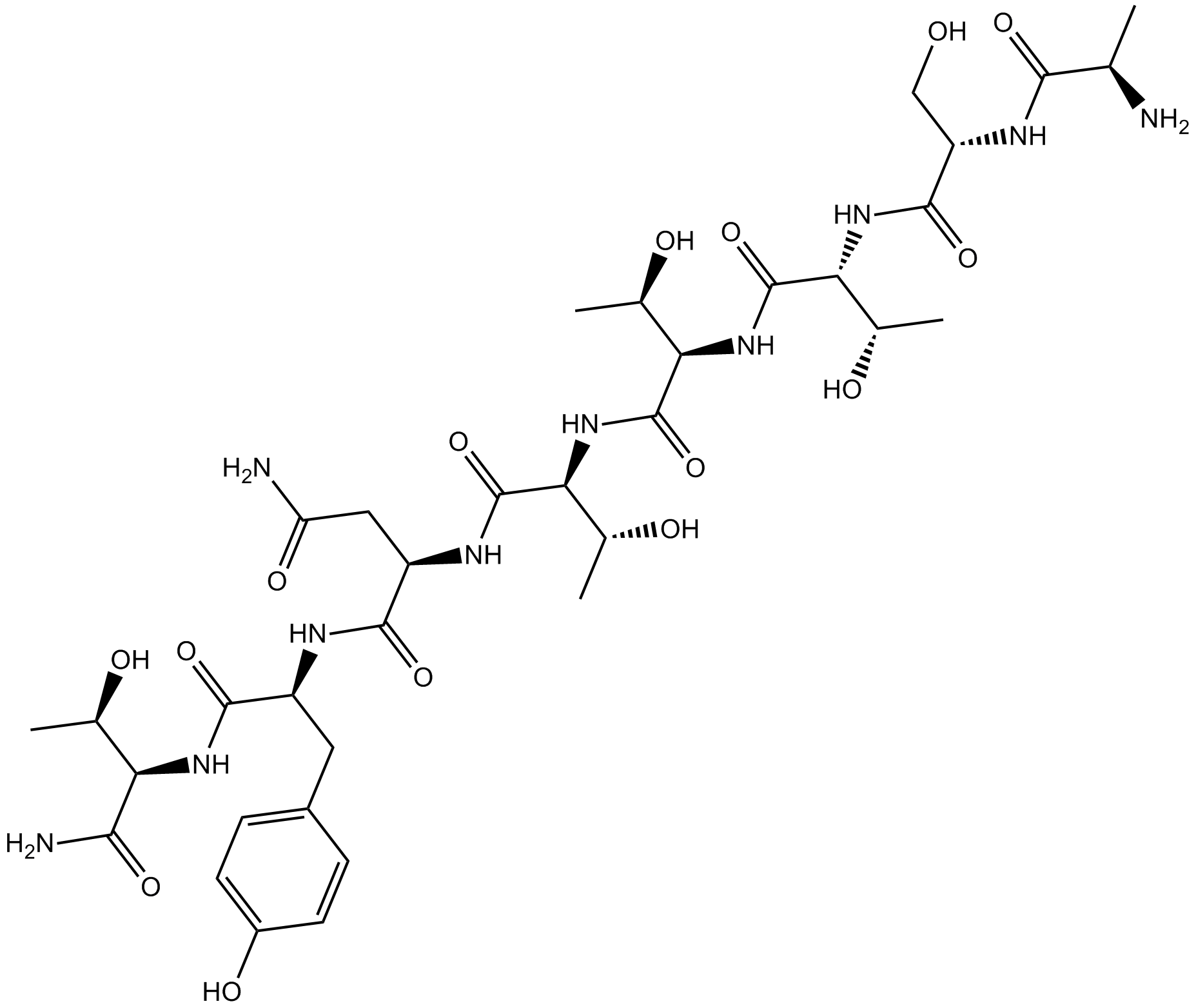
-
GC31744
GSK2239633A
GSK2239633A is a CC-chemokine receptor 4 (CCR4) antagonist, which inhibits the binding of [125I]-TARC to human CCR4 with a pIC50 of 7.96?±?0.11.
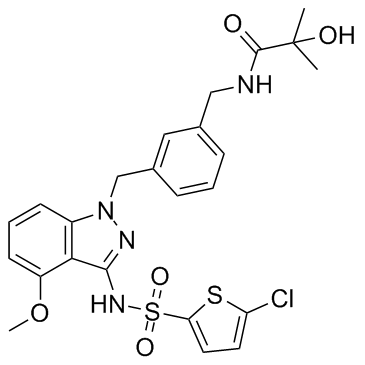
-
GC32010
GW 766994 (GW 994)
GW 766994 (GW 994) (GW 994) is an orally active and specific chemokine receptor-3 (CCR3) antagonist.
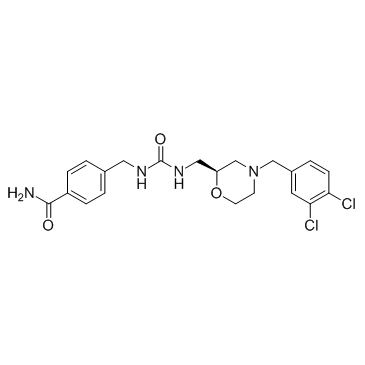
-
GC36306
INCB 3284
INCB 3284 is a potent, selective and orally bioavailable human CCR2 antagonist, inhibiting monocyte chemoattractant protein-1 binding to hCCR2, with an IC50 of 3.7 nM.
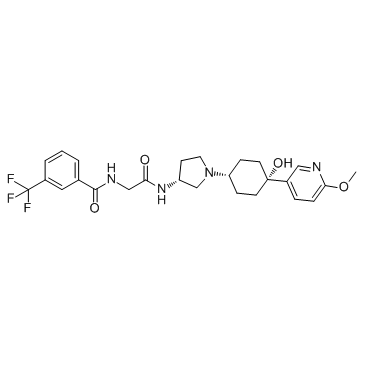
-
GC14821
INCB 3284 dimesylate
An antagonist of the MCP-1 receptor CCR2
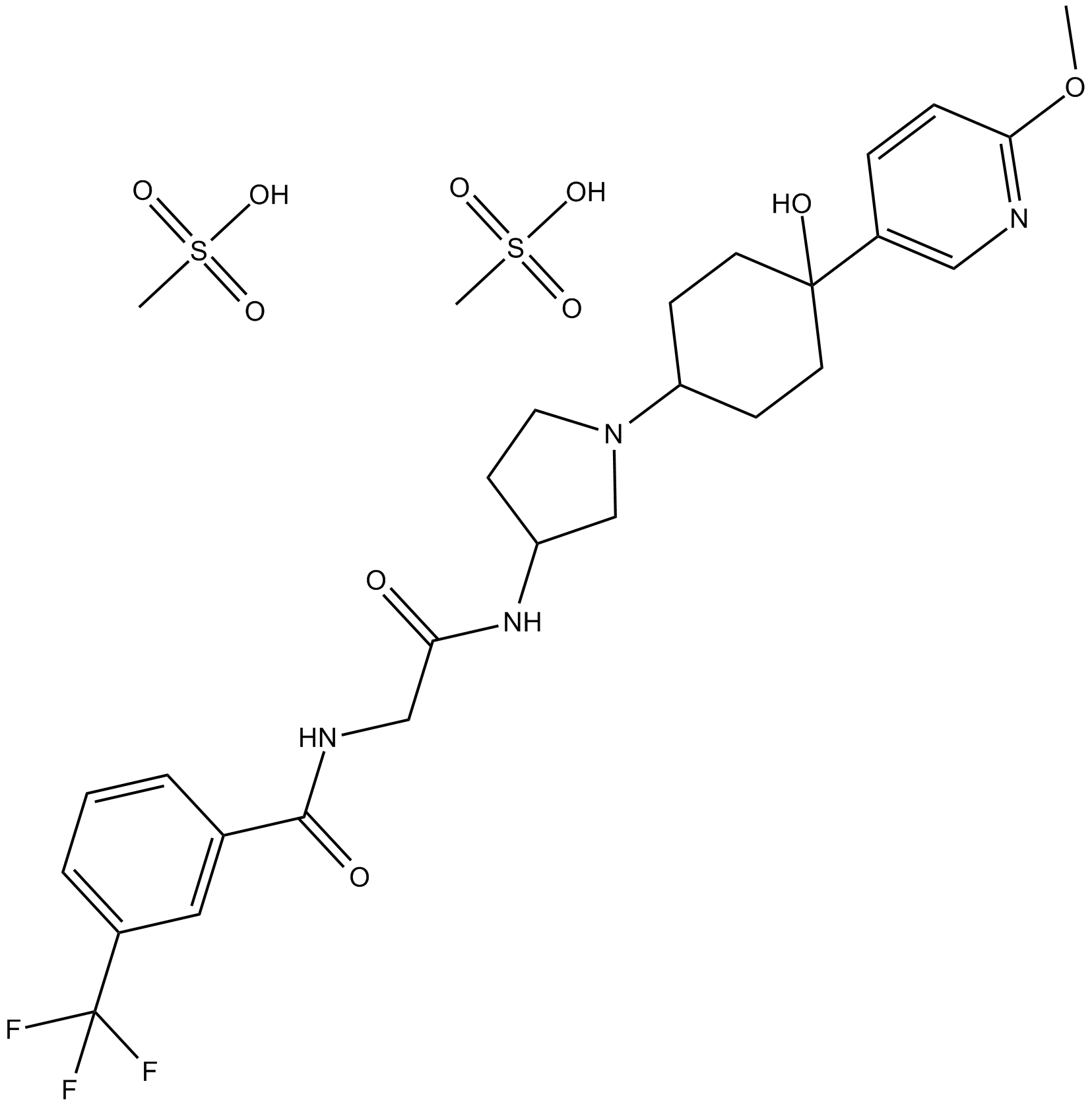
-
GC10207
INCB3344
An antagonist of CCR2
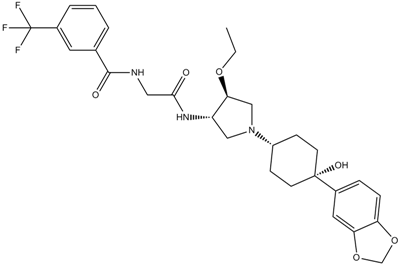
-
GC11994
INCB8761(PF-4136309)
A CCR2 antagonist
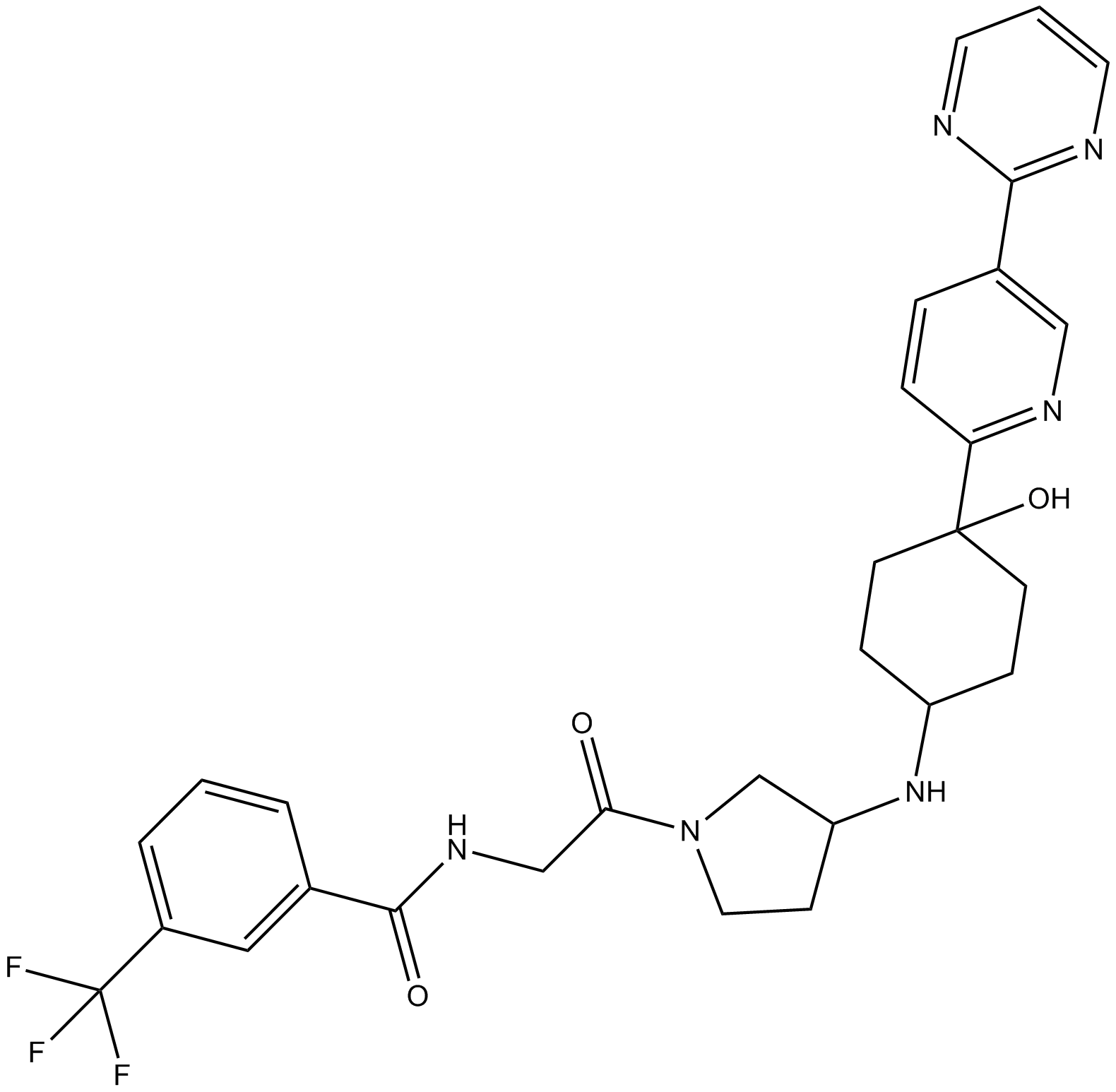
-
GC14554
J 113863
chemokine receptor 1 (CCR1) antagonist
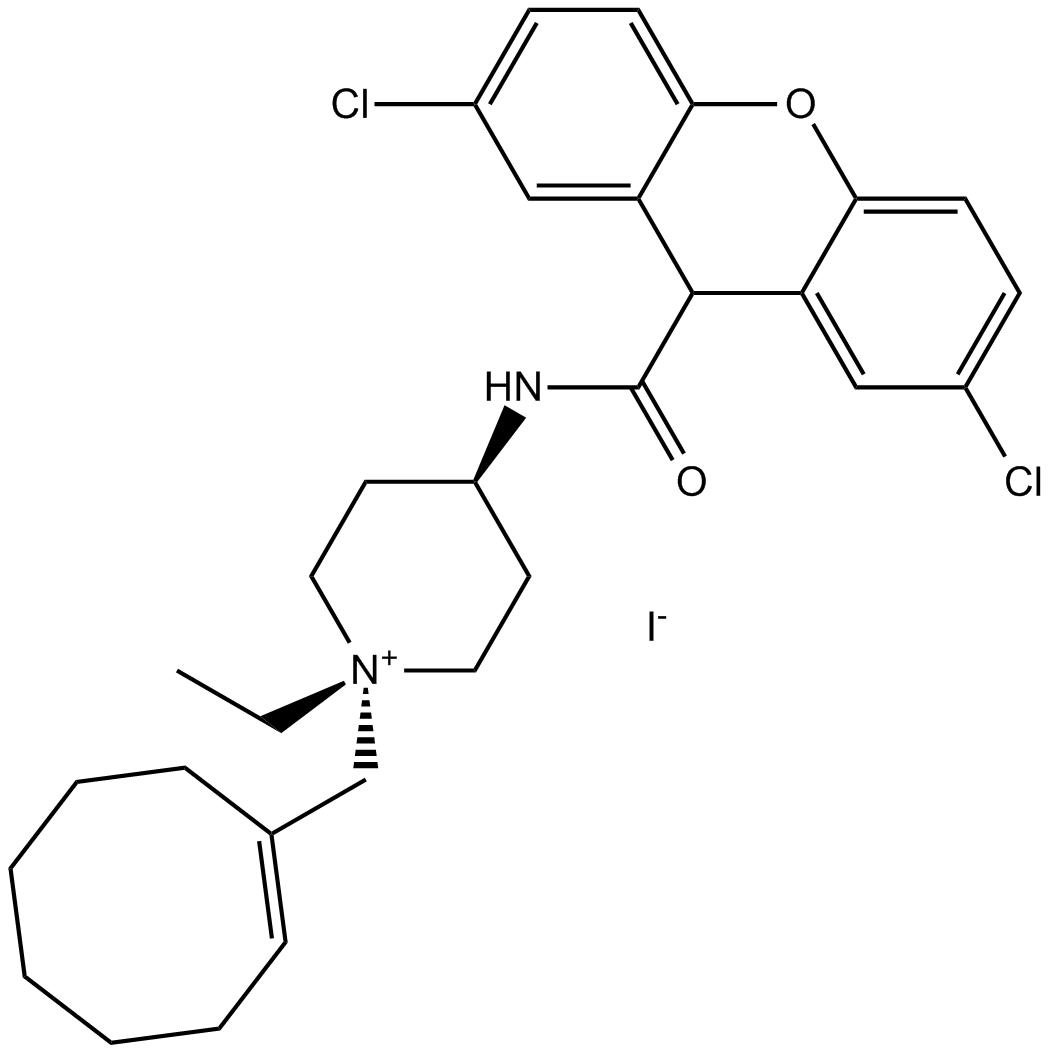
-
GC60212
K777
A cysteine protease inhibitor
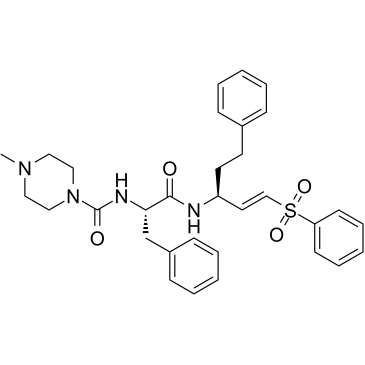
-
GC60998
LMD-009
LMD-009 is a selective CCR8 nonpeptide agonist.
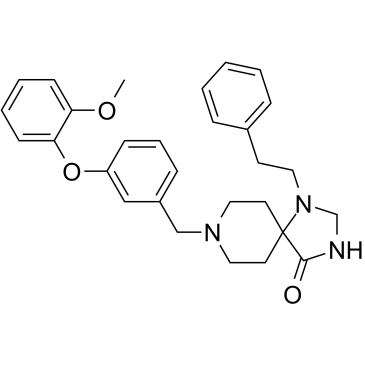
-
GC15090
Maraviroc
Maraviroc, the first CCR5 antagonist, has been approved for the treatment of HIV infection, IC50 on hERG ion channel>10μM.
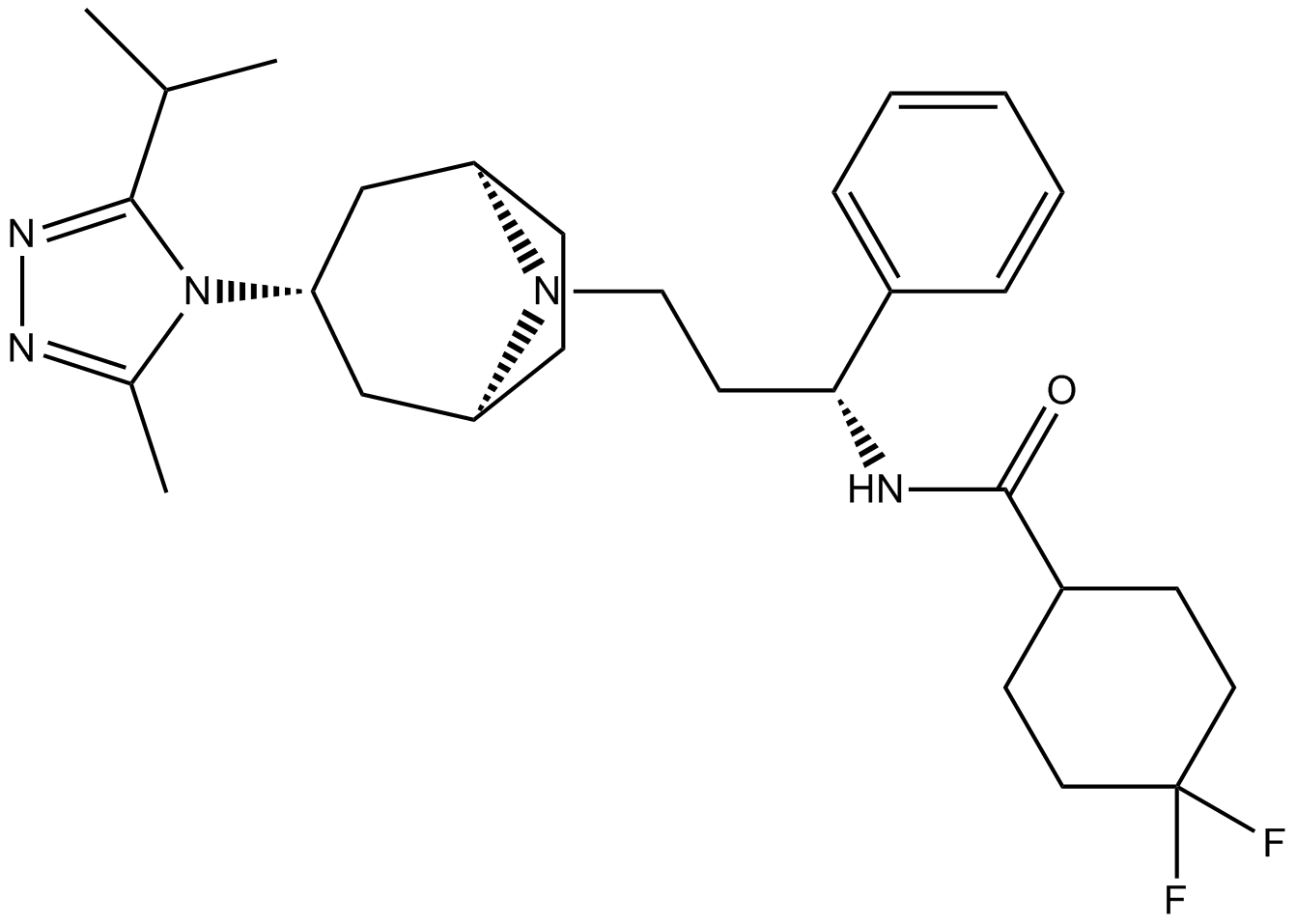
-
GC11636
MK-0812
A CCR2 antagonist
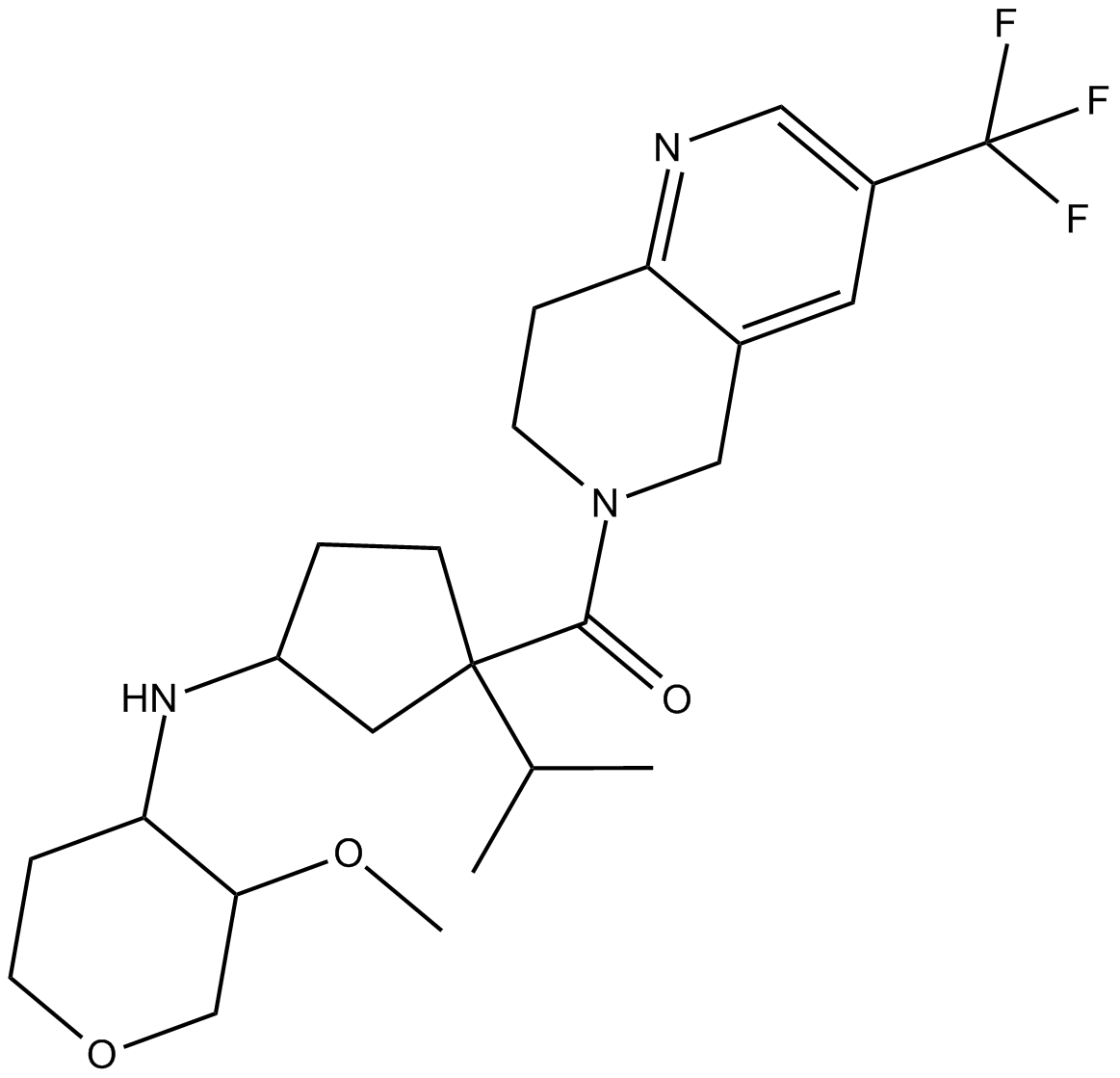
-
GC36622
MK-0812 Succinate
MK-0812 Succinate is a potent and selective CCR2 antagonist with high affinity at CCR2.
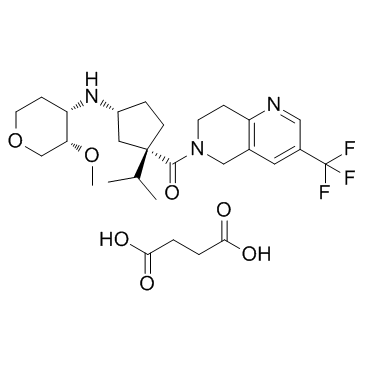
-
GC65990
MLN3126
MLN3126 is an orally active and potent CCR9 antagonist. MLN3126 inhibits CCL25-induced calcium mobilization and chemotaxis of mouse primary thymocytes, wiht an IC50 value of 6.3 nM for calcium influx.
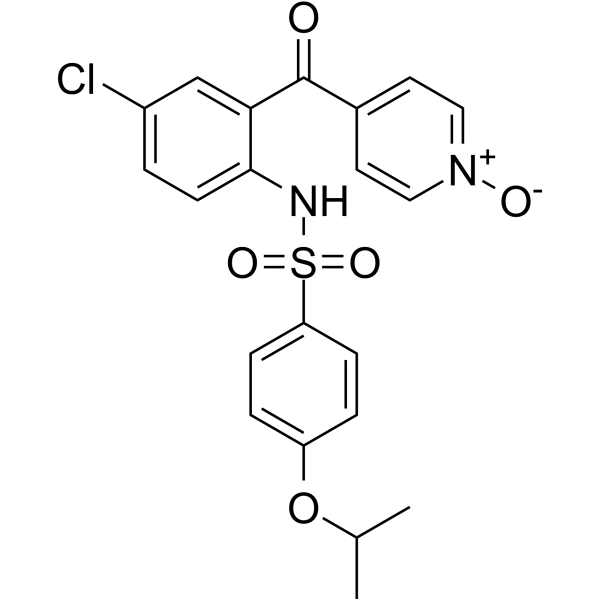
-
GC61879
Nifeviroc
Nifeviroc is an orally active CCR5 antagonist.
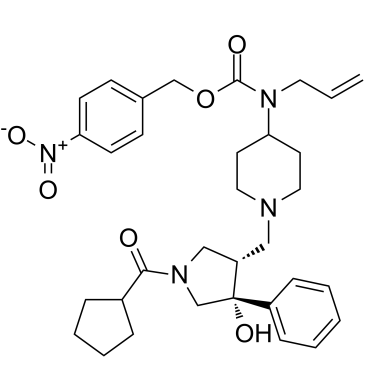
-
GC36880
PF-04634817
PF-0463481 is a potent and orally active dual CCR2/CCR5 antagonist with comparable human and rodent CCR2 potency (rat IC50=20.8 nM), and displays 10-20 fold less rodent CCR5 potency (rat IC50=470 nM).
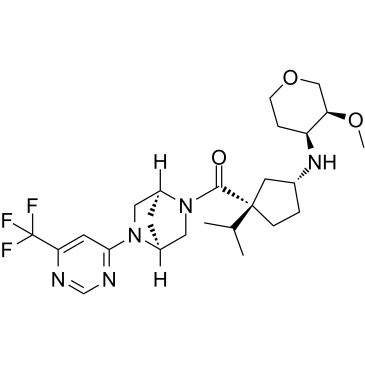
-
GC25728
PF-4136309
PF-4136309 (INCB8761, PF-04136309) is a potent, selective, and orally bioavailable CCR2 antagonist with an IC50 of 5.2 nM for human CCR2.
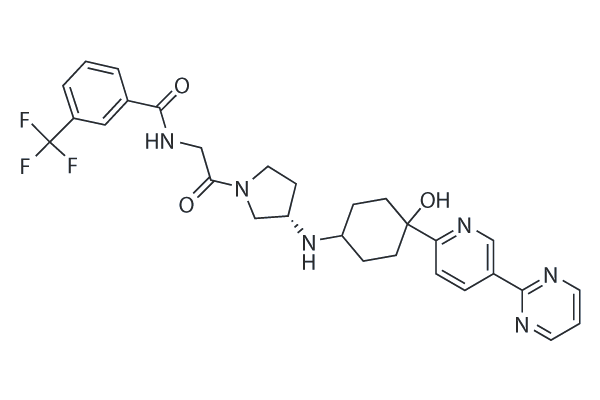
-
GC12790
Pirfenidone
TGF-β production inhibitor
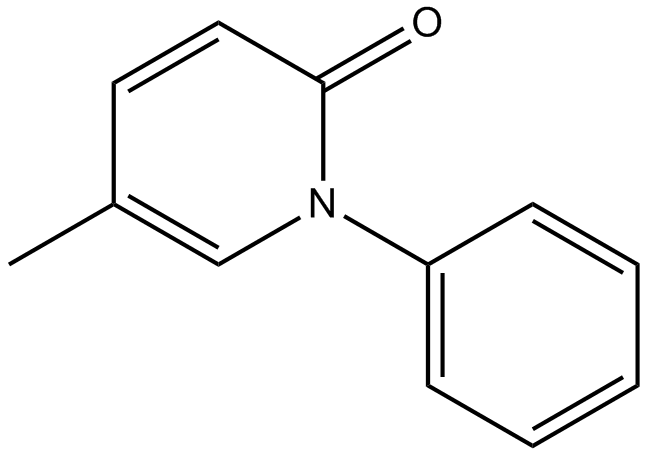
-
GC40197
Pirfenidone-d5
Pirfenidone-d5 is intended for use as an internal standard for the quantification of pirfenidone by GC- or LC-MS.
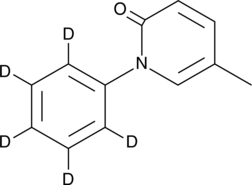
-
GC69719
Plozalizumab
Plozalizumab (MLN-1202) is a specific humanized anti-CCR2 antibody. Plozalizumab can be used in research on malignant melanoma.
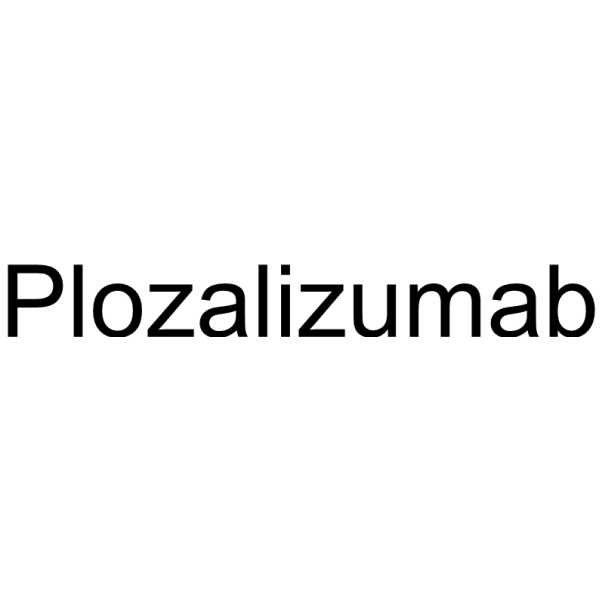
-
GC62724
R243
R243 is a potent and selective CCR8 antagonist.
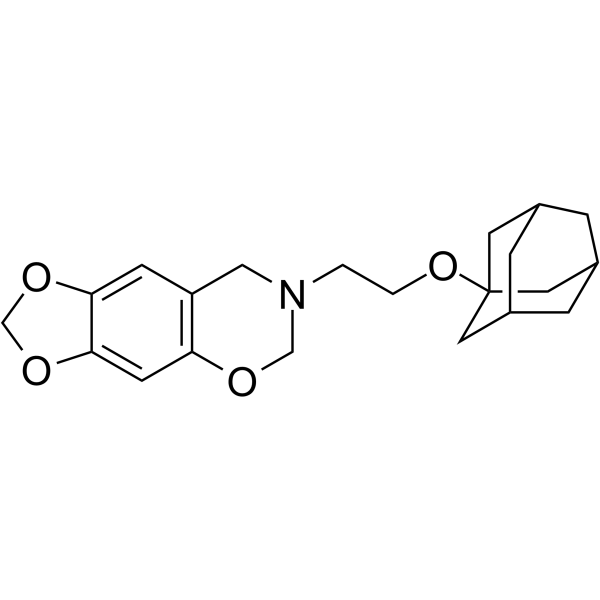
-
GC67869
RPT193

-
GC11026
RS 102895 hydrochloride
CCR2-selective chemokine receptor antagonist
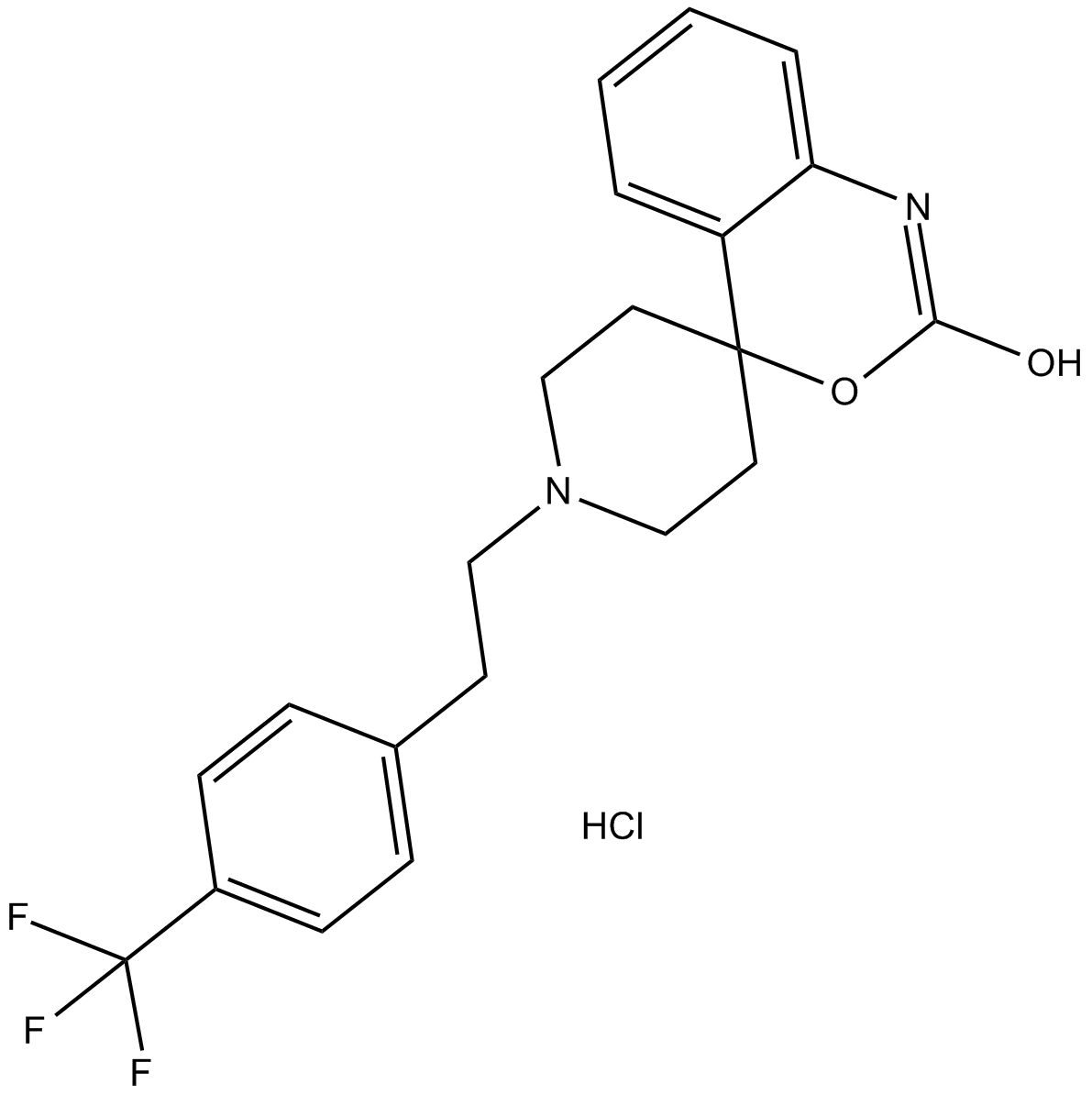
-
GC15489
RS 504393
A CCR2 chemokine receptor antagonist
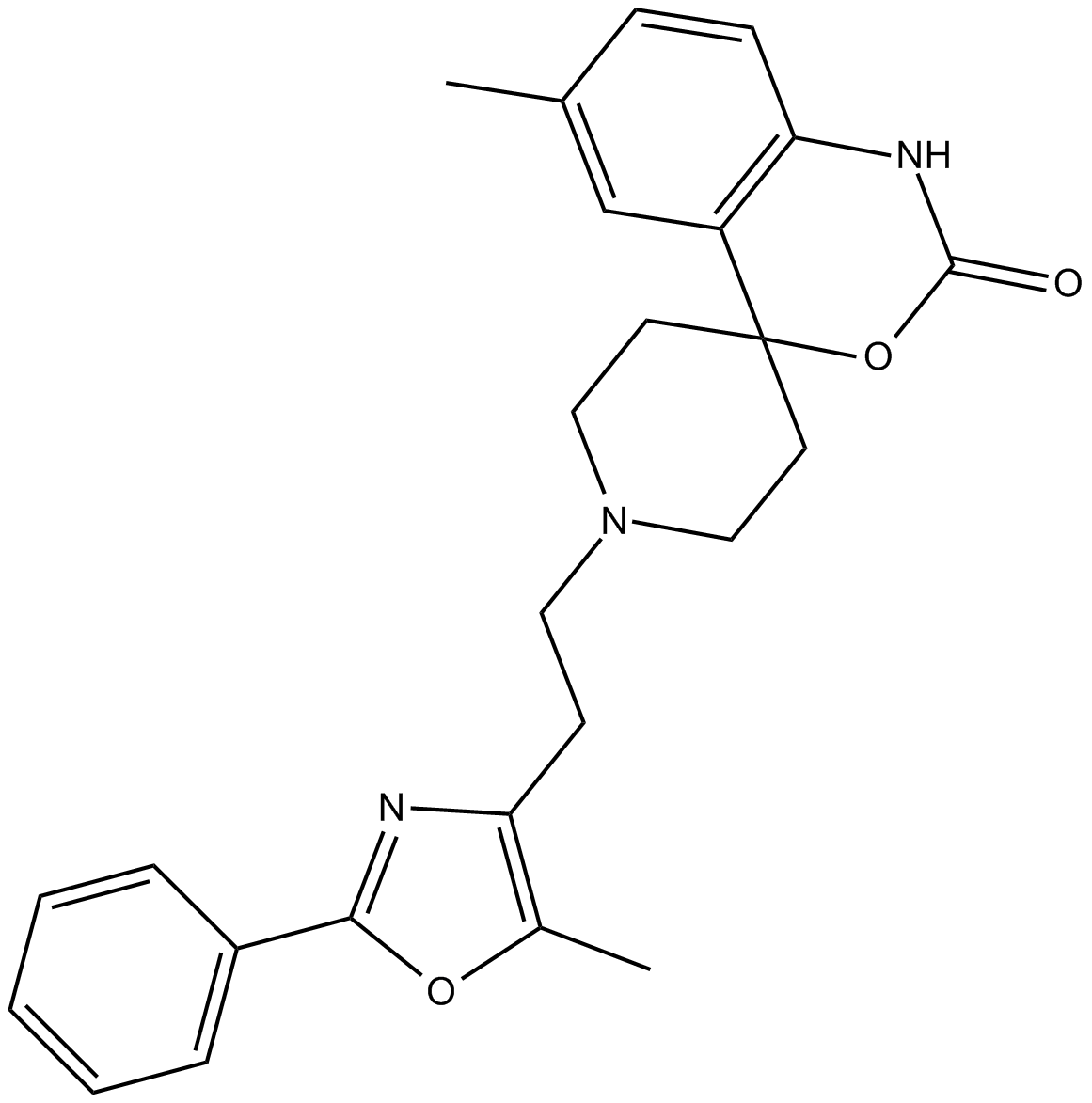
-
GC37564
RS102895
RS102895 is a potent CCR2 antagonist, with an IC50 of 360 nM, and shows no effect on CCR1.
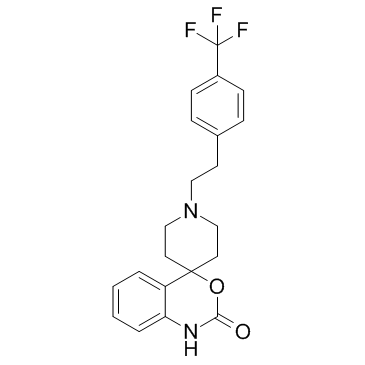
-
GC11946
SB 297006
CCR3 antagonist
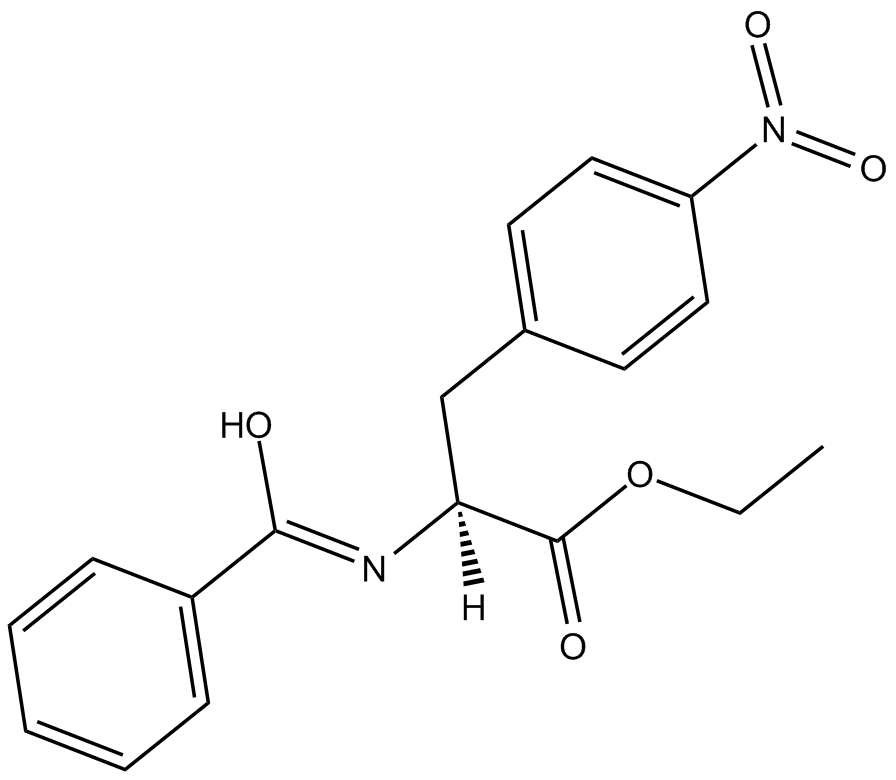
-
GC32135
TAK-220
A CCR5 antagonist
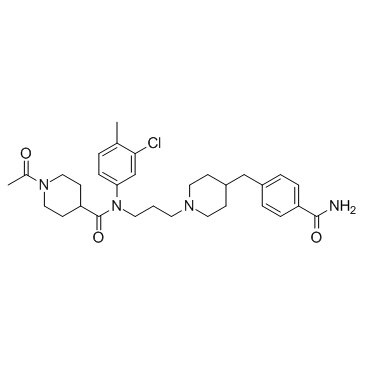
-
GC37724
TAK-779
An antagonist of CCR5, CXCR3, and CCR2b
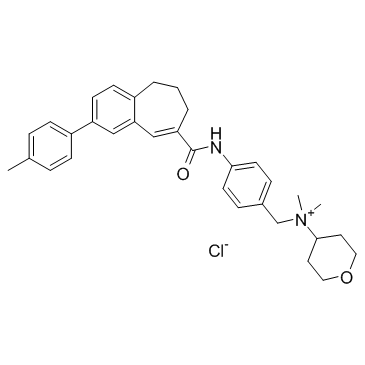
-
GC17834
Teijin compound 1
Teijin compound 1 (Teijin compound 1 hydrochloride) is a potent and specific CCR2 antagonist, with IC50s of 180 nM for CCR2b.
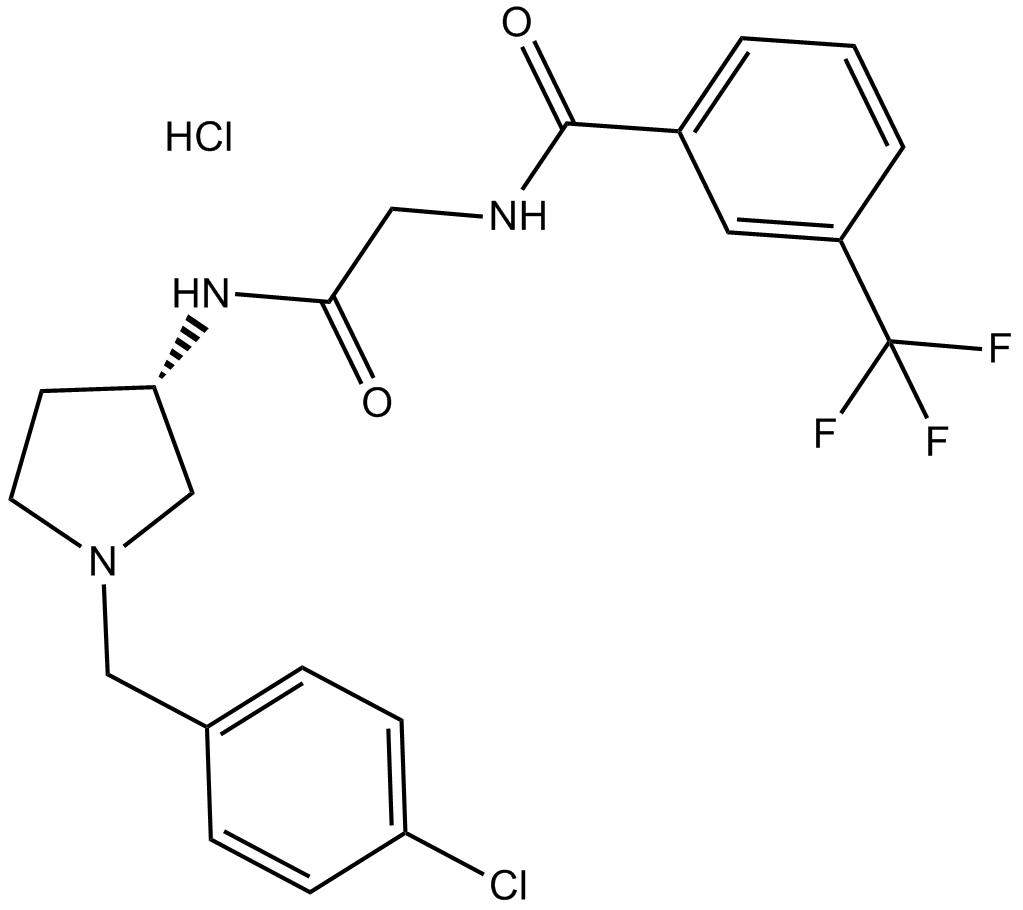
-
GC69120
Tivumecirnon
Tivumecirnon (FLX475) is an effective CCR4 antagonist that can block regulatory T cells that interfere with effective anti-tumor immune responses, and has anti-tumor activity.
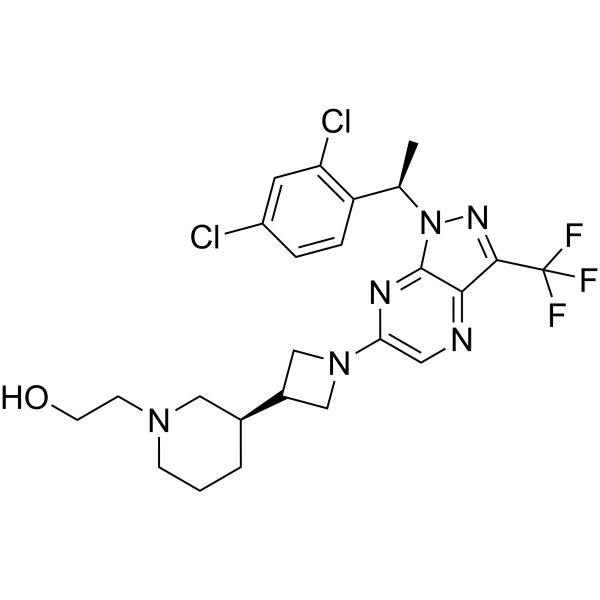
-
GC18661
Vercirnon
An antagonist of CCR9
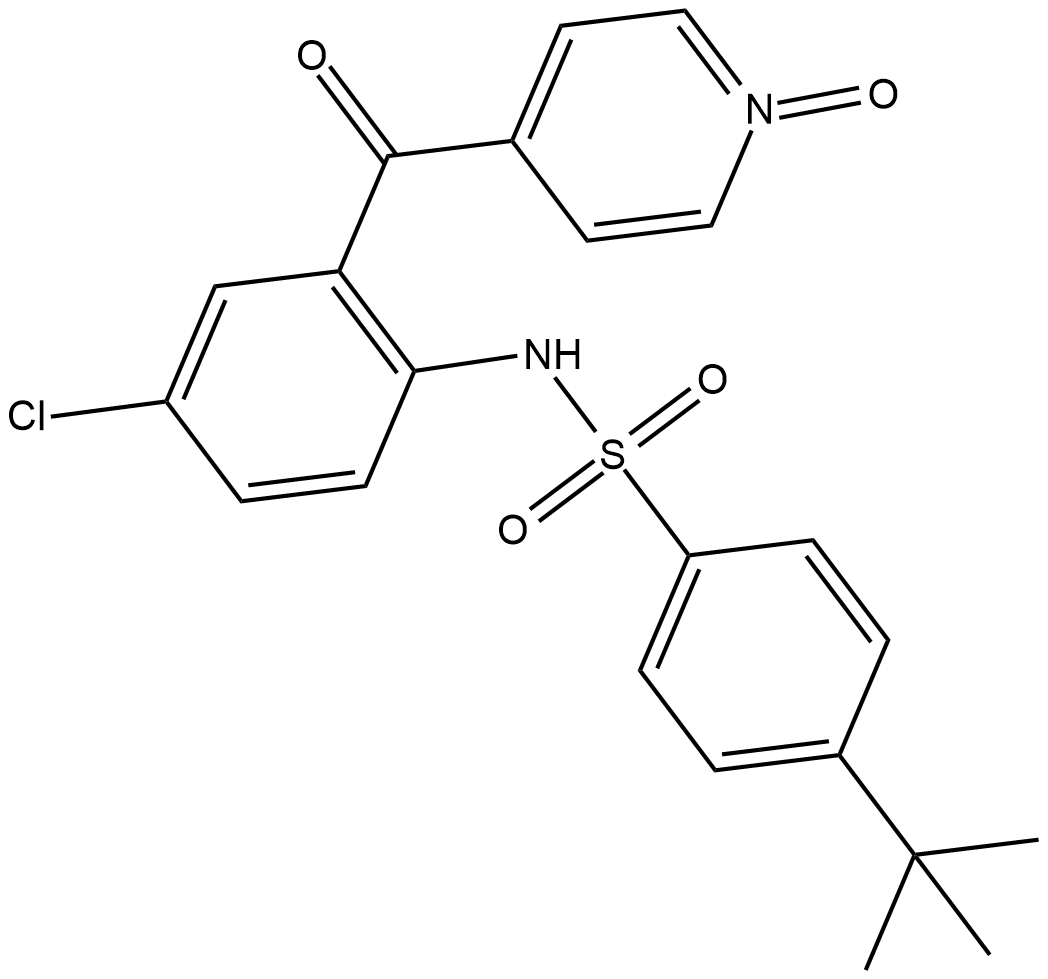
-
GC17421
Vicriviroc maleate
A CCR5 antagonist
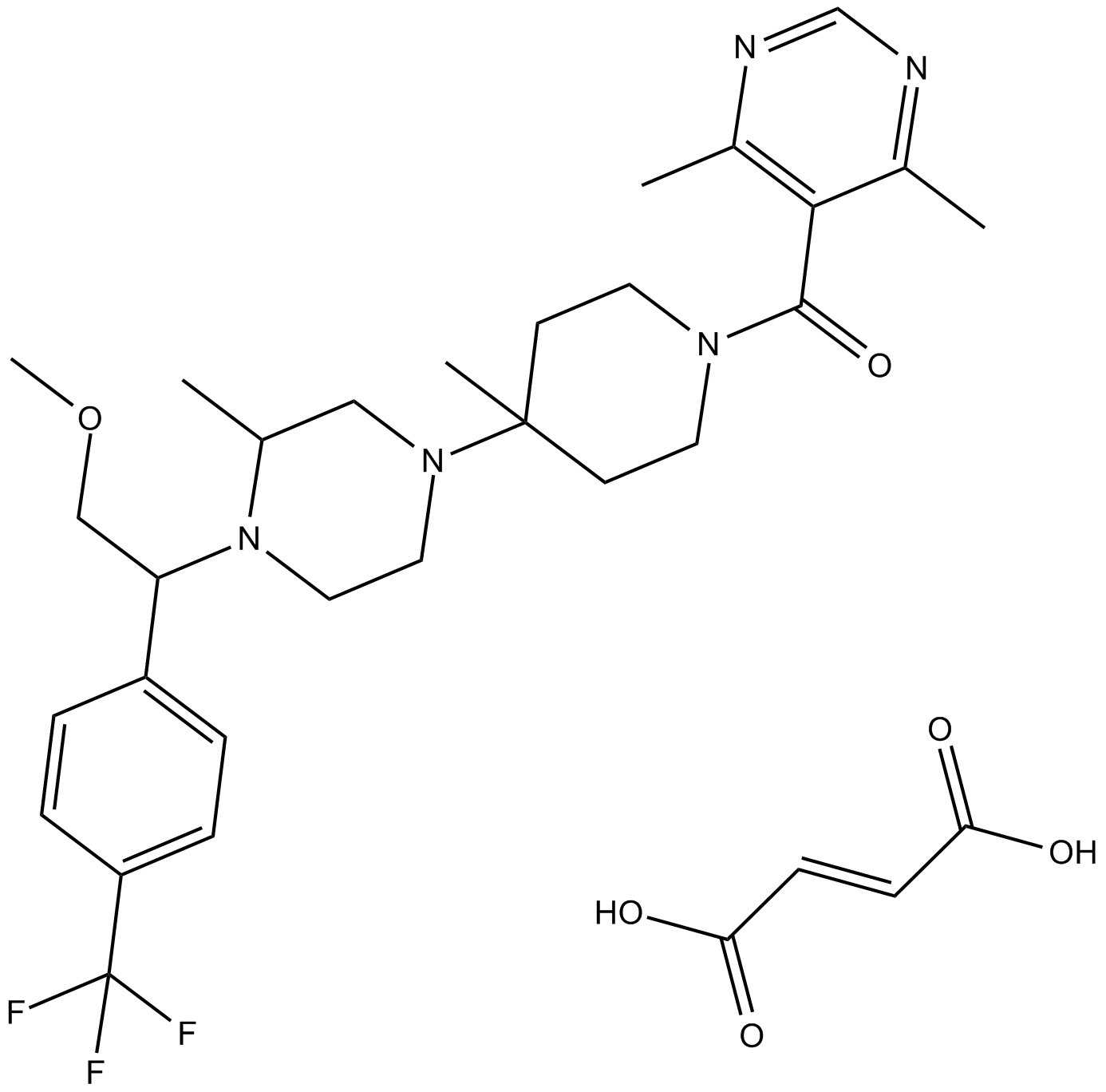
-
GC11938
YM 022
CCK2 silent antagonist
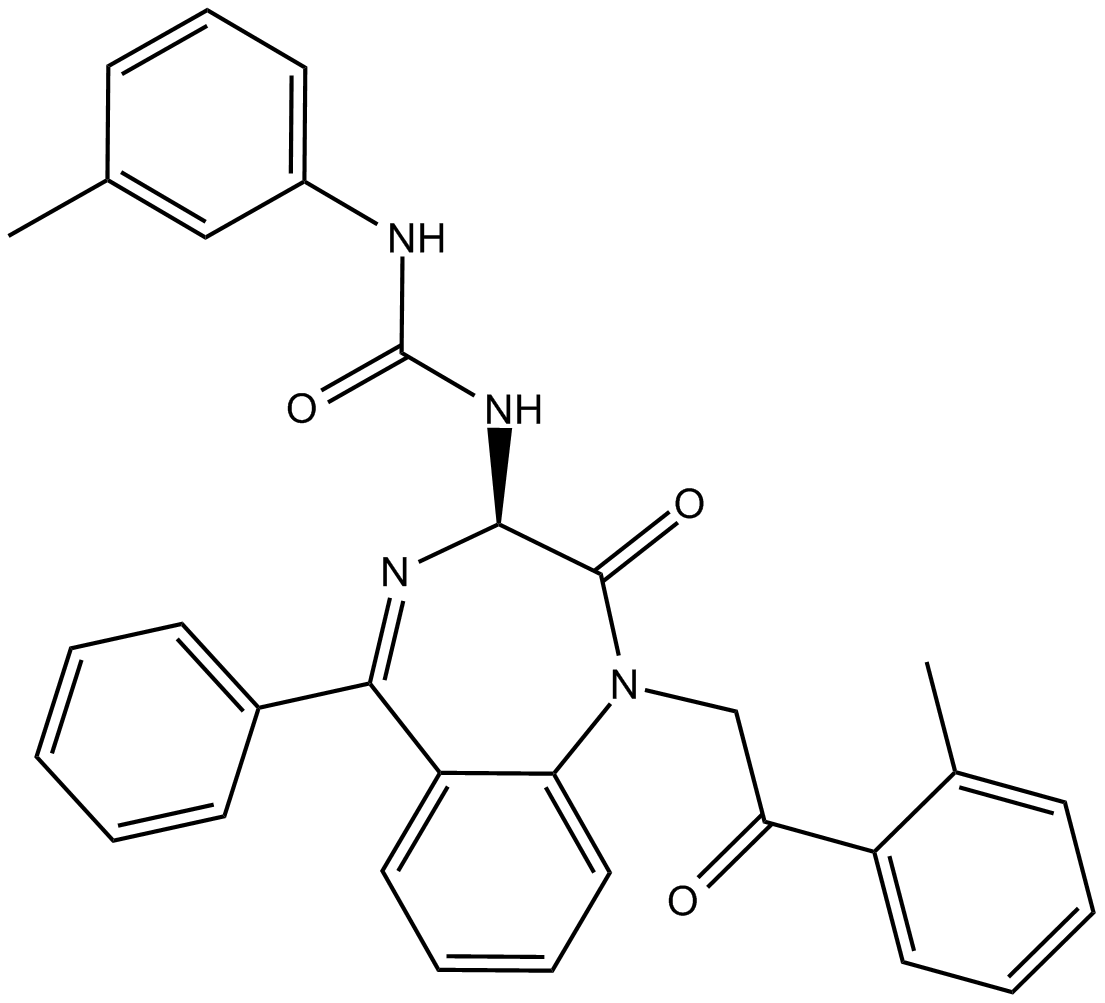
-
GC45714
ZK 756326 (hydrochloride)
ZK 756326 (hydrochloride) is a nonpeptide chemokine receptor agonist for the CC chemokine receptor CCR8.



